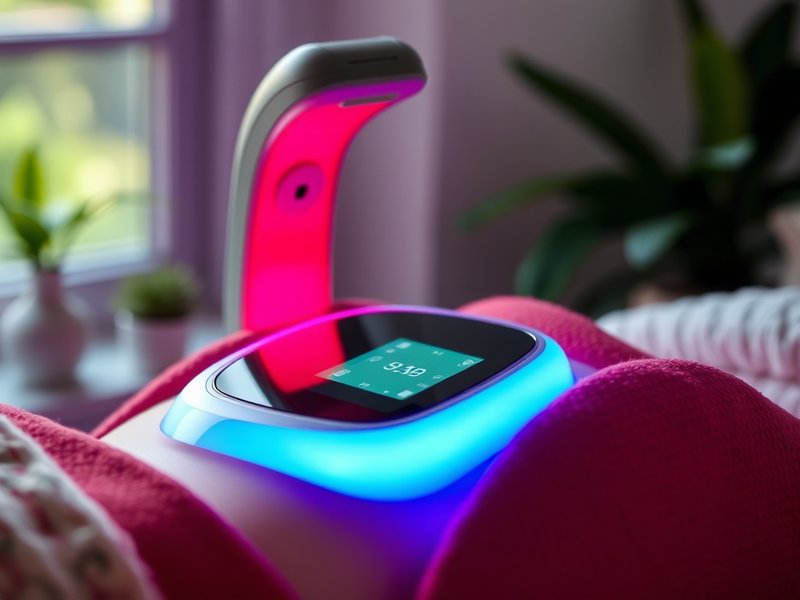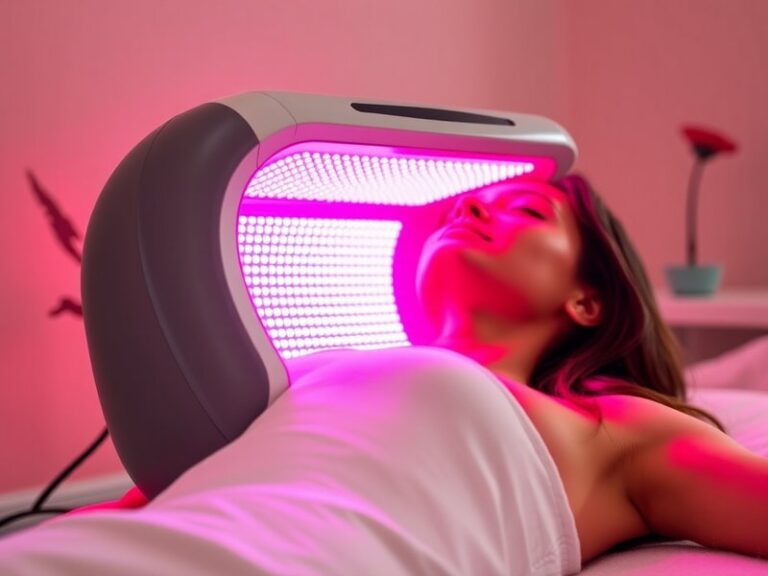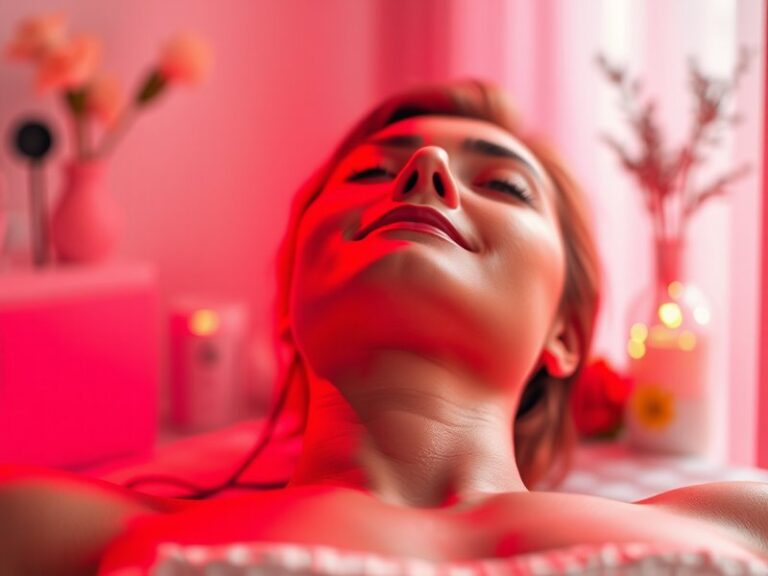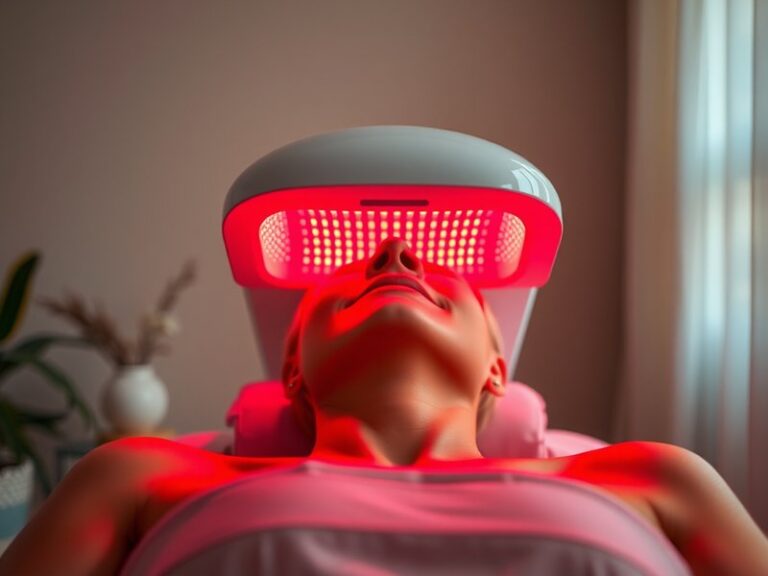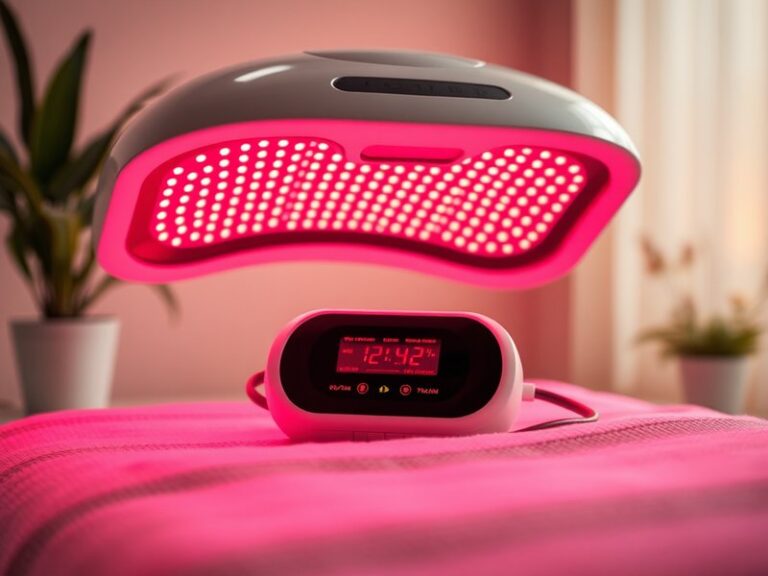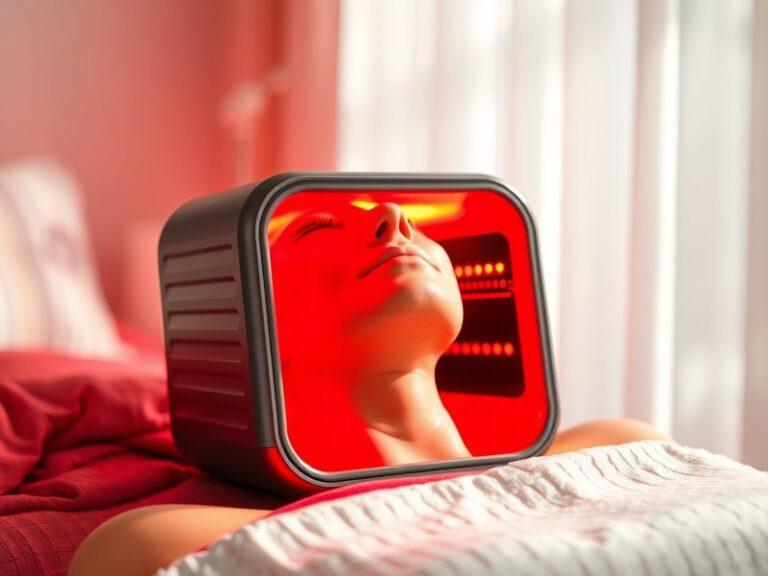What Does Red Light Therapy Do For Your Stomach?
What Does Red Light Therapy Do For Your Stomach?
Have you ever wondered how red light therapy can influence your digestive health?
In this article, we will explore the mechanisms behind red light therapy and how it might benefit your stomach. We will delve into its benefits, discuss its feasibility, and consider alternatives to this innovative treatment.
Key Takeaways
- Red light therapy promotes healing and pain relief, potentially benefiting digestive issues.
- This non-invasive treatment can enhance gut health by reducing inflammation.
- Several alternatives exist for improving digestive health, making it important to choose the right approach for individual needs.
What is Red Light Therapy?
Red light therapy (RLT) is a therapeutic technique that uses low-wavelength red light. This visibility-friendly light penetrates the skin to stimulate cellular processes. Originally developed for treating skin conditions and promoting wound healing, RLT has gained popularity for its potential benefits in various health sectors, including gastrointestinal health.
Read our take on Can I use red light therapy with makeup?
RLT is thought to work by promoting ATP (adenosine triphosphate) production in cells, aiding the healing process and cellular regeneration. Its application in the context of stomach health has been explored in both clinical and anecdotal settings.
What are the Benefits of Red Light Therapy?
Exploring the benefits of red light therapy can shed light on its potential impacts on digestive health.
Inflammation Reduction
One of the most significant benefits of RLT is its ability to reduce inflammation. Inflammation is a common factor in various gastrointestinal disorders, such as IBS (Irritable Bowel Syndrome) and gastritis. By mitigating inflammation, RLT can potentially alleviate discomfort and improve digestive function.
Promotion of Healing
Red light therapy enhances cellular repair processes, which is crucial for the stomach lining’s integrity. For those recovering from gastric ulcers or other digestive tract injuries, RLT may speed up healing and restore normal functionality.
Pain Relief
Chronic abdominal pain can severely impact one’s quality of life. RLT has been shown to reduce pain perceptions in various studies, which may translate to comfort for individuals suffering from digestive disorders.
Improved Gut Microbiome
Emerging research suggests that RLT may positively affect the gut microbiome, which plays a critical role in overall health. By promoting a balanced gut flora, RLT could contribute to enhanced digestion and nutrient absorption.
Is it Possible to Use Red Light Therapy for Stomach Health?
Using RLT for stomach health is increasingly recognized in both alternative and conventional medicine circles. While the concept may sound niche, the evidence supporting its use is growing.
What are the Advantages of Red Light Therapy for Stomach Health?
The advantages of RLT in digestive health are notable.
Non-Invasive Treatment
Unlike surgery or certain medications, RLT is non-invasive and carries minimal side effects, making it an appealing option for many individuals seeking relief from digestive issues.
Accessibility
With advancements in technology, various devices for at-home use are available, giving patients convenient access to treatment. Individuals can incorporate RLT into their self-care routines easily.
Complementary Therapy
RLT can function alongside other treatment modalities. It may be used in conjunction with dietary changes or medications, enhancing overall therapeutic outcomes.
Potential for Long-Term Benefits
Regular use of RLT may provide sustained improvements in gut health, leading to long-term relief from chronic symptoms and conditions.
What are the Disadvantages of Red Light Therapy?
Although RLT has many potential benefits, it’s essential to consider some potential downsides.
Limited Research
While there is growing interest in red light therapy, more extensive clinical studies are needed to confirm its efficacy specifically for stomach health. Current evidence is primarily anecdotal or preliminary.
Treatment Duration
To experience significant benefits, RLT requires consistent and possibly prolonged treatment sessions, which may disrupt daily schedules.
Individual Variability
The effects of RLT can vary widely among individuals. Some may not experience noticeable improvements, leading to frustration or disappointment.
What are the Things to Consider Before Trying Red Light Therapy?
Before embarking on a red light therapy regimen, it’s vital to consider several factors.
Consultation with Healthcare Providers
Before starting RLT, consult with a healthcare provider. They can address concerns, particularly if you have existing digestive conditions or are on medications.
Device Quality
Using a high-quality red light therapy device is imperative for effectiveness. Cheaper devices may not deliver the right wavelength or intensity, reducing treatment efficacy.
Commitment to Treatment
Preparation for consistent RLT sessions is necessary for optimal results. Assess how realistically you can incorporate this into your routine.
For more, see Does Red Light Therapy Cause Sweating?
What are the Alternatives to Red Light Therapy?
If RLT doesn’t resonate with you, consider these alternative options for improving stomach health.
Dietary Changes
Implementing a diet rich in fiber, probiotics, and anti-inflammatory foods can greatly benefit gut health, helping manage symptoms associated with digestive disorders.
Probiotics
Probiotic supplements can restore balance to the gut microbiome, improving digestion and nutrient absorption. They are widely available and well-studied.
Acupuncture
This ancient practice targets pressure points in the body, potentially enhancing digestive function and reducing symptoms like bloating and pain.
Herbal Remedies
Natural herbal remedies, such as ginger and peppermint, have been shown to aid digestion and alleviate gastrointestinal distress.
Conclusion: Is it Recommended to Use Red Light Therapy for Stomach Health?
In summary, red light therapy presents an intriguing option for improving stomach health through its anti-inflammatory, healing, and pain-relieving properties. However, individuals should consider the limitations and discuss their situation with a healthcare professional to determine the best approach for their needs.
Frequently Asked Questions
Is red light therapy safe for everyone?
While generally considered safe, individuals with certain conditions, such as skin sensitivities or photosensitivity, should consult their doctor before using RLT.
How long does it take to see results?
Results can vary widely among individuals. Some may notice improvements within a few sessions, while others may require weeks of consistent treatment.
Will insurance cover red light therapy?
Most insurance plans do not cover RLT, as it is often classified as an alternative therapy. Checking with your insurance provider for specifics is advised.
Can I do red light therapy at home?
Yes, many devices on the market allow for at-home treatments. Ensure you choose a quality product for effective results.
What other conditions can red light therapy treat?
RLT is being researched for various conditions, including skin issues, joint pain, hair loss, and more. Always explore with a healthcare professional for personalized advice.
